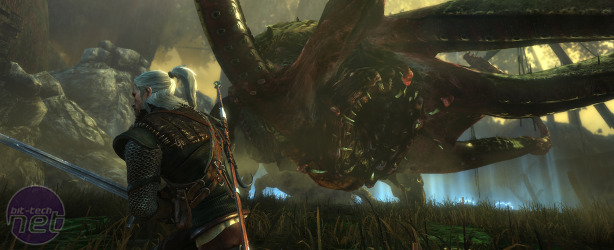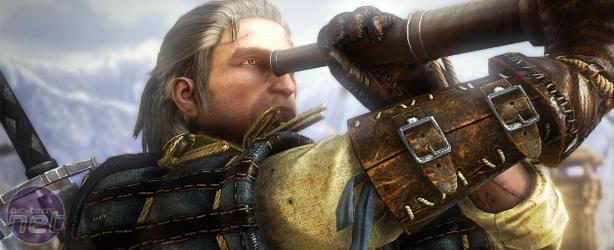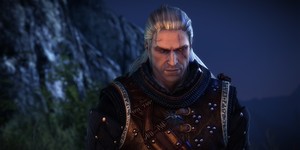The Witcher 2: Assassins of Kings Review
May 17, 2011 | 10:28
Companies: #cd-projekt #good-old-games #namco-bandai

The Witcher 2 Review
In a move that’s likely as much to do with fear of making the game too complex as it is to do with addressing the flaws of the original, CD Projekt has also moved to simplify the combat controls for The Witcher 2. Now, rather than having to click in a specific rhythm in order to build combos, players are able to wield their twin-swords in a more hack and slash manner – just click to swing.It’s important to emphasise that this simpler control scheme doesn’t unbalance or reduce the complexity of battles, however. For starters, one of the few weak points from which The Witcher 2 suffers is that it’s often difficult to judge the range and speed of your individual strikes. Light attacks, which are meant to be fast, can be just as slow as their heavy counter-parts; which sometimes don’t provide the reach you need. It's simple enough to close the distance and hack away, but it's similarly easy to leave yourself open to counterattacks if you aren't careful. Thus, simple doesn't mean easy.
As if this weren't enough, tactical complexity is then layered on to the game through alchemy and agility, both of which further press the need to think before you act. Battles must be planned ahead.
As in the first game, Geralt can collect plants and dissect corpses, using his gains to create potions, explosives and traps. Potions can’t be taken in the midst of a fight, however, so you usually need to form a strategy far in advance if you think you’ll run into a particular type of threat. Throwing knives and spells also provide a further level of protection if your toxicity is too high to gulp another brew, so just be careful that you don’t run out of stamina.
Unfortunately, while the interface and options provided by all these different ideas is impeccably put together, there are a few places where The Witcher 2’s controls falter. Searching enemy corpses, for example, can be a tiresome process even when you’re using Geralt’s detection amulet to highlight them in the undergrowth. Not only is the pop-up box tiny, but it’s also hard to summon thanks to awkwardly sized hotspots.
Quicktime events make an unwelcome appearance too, although you can at least turn their difficulty down through the in-game options. Again, though; the button indications are hard to spot when they're sprung on you suddenly and the concept seems oddly incongruous when placed within an otherwise intelligent design.
The Witcher 2 overcomes these flaws with ease, however, and the overall impression we had was that CD Projekt’s game design ethic is on par with the company’s attitude to DRM in the way that it respects players' abilities to think for themselves. It’s obviously a risky strategy – just as the lack of DRM opens the title to piracy, the lack of guidance and level of challenge paves the way for complaints for ill-prepared players. Personally, we find it’s an approach that has paid off in spades.
It’s true that you could likely boot up The Witcher 2 with no idea of what it was, hacking and slashing your way through without a care, but doing so would be a travesty. The Witcher 2 is one of the most exciting and involving RPGs we’ve seen in a long, long time. It forms a logical competitor to more action-orientated titles, such as Mass Effect, and succeeds where previous pretenders, such as Dragon Age 2, have failed. Those who can bear the QTEs and practice finding hotspots, who take the time to immerse themselves in the world and understand the characters will find an experience that’ll be tough to beat - not just for future RPGs, but all future titles.

-
Overall95 / 100


MSI MPG Velox 100R Chassis Review
October 14 2021 | 15:04











Want to comment? Please log in.